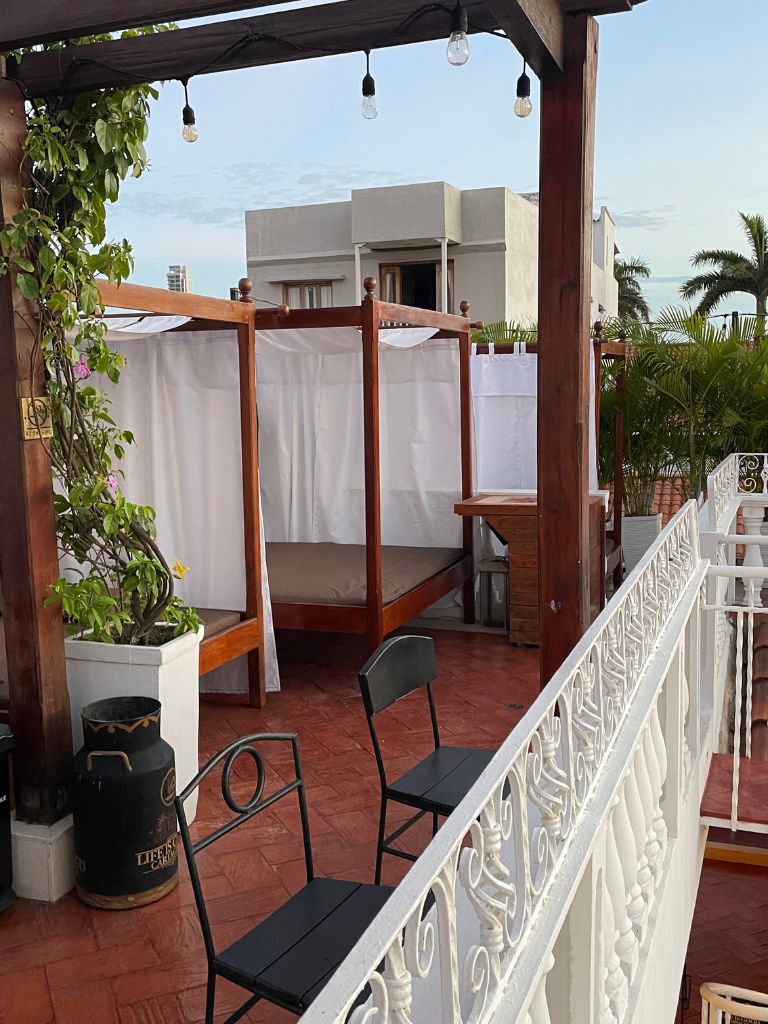How to Interrail on a Budget: Interrail Europe CHEAP! (2023)
Some links in this post contain affiliate links. I receive a small commission if you use the links at no extra cost to you! Happy reading 😀
Looking to interrail Europe on a budget? You’re in the right place! Let’s be honest, Europe is expensive. It’s one of the most expensive continents on the planet! That’s why I’ve written this guide to help budget backpackers out there how to interrail on a budget!
But interrailing Europe CAN be done on a budget. You just have to be smart about it, and follow some of these simple interrail budget tips.
The first time I interrailed around Europe, I made a lot of mistakes. I overspent, went over my budget and ended up with a lot less money than when I started!
But as a keen Europe traveller (having travelled on and off to Europe many times), I’ve now picked up some tips to help you to interrail on a budget.
🚝 Need to buy your interrailing pass? I recommend checking this website for the best discounts and deals!
NOTE: This post also works with the Eurail Pass.
Other interrailing posts:
- Is the Interrail Pass Worth it? An Honest Review
- Interrailing Switzerland: Route, Itinerary and Guide
- Interrailing Routes 3 Weeks: FOUR Routes You’ll Love!
- 21 Interrail Tips for First-Timers: Interrailing Europe
- What To Pack Interrailing Europe: Packing List Essentials


How to Interrail on a Budget: A Summary
Interrailing (or using a Eurail) pass to travel around Europe is one of the best ways to see the continent. Not only are trains in Europe fast, modern and safe, but they’re also cheaper than flying and shorter than long bus journeys between multiple countries.
But regardless of whether you’re interrailing, flying, or taking the bus around Europe, it’s an expensive place to travel.
An interrail (or Eurail) pass gives you unlimited travel on trains across Europe, so you can hop on and off in multiple countries. There are different interrail passes to choose from, depending on where you want to go and how long you want to travel. But you still need to pay for your ticket, as well as seat reservations on top of this.
However, the interrailing pass does include continent-wide discounts, so this is a big budget-friendly tip when buying!
🚝 Need to buy your interrailing pass? I recommend checking this website for the best discounts and deals!
How much does an interrailing pass cost?
Let’s start with the basics. If you haven’t bought an interrailing (or Eurail) pass yet, this is how much it’s going to cost you.
NOTE: ‘7 days’ or ‘4 days’ etc means the actual days you are on a train, not the entire trip duration.
All prices are listed as an average between two prices, as there are always discounts on youth passes and adults. There are different global passes and one-country passes, and which one you choose is up to you.
- 7-Day Interrailing Pass within 1 Month: 200-300 EUR
- 4-Days within 1 month: 150 – 200 EUR
- 15-days within 2 months: 400 – 500 EUR
- 3 months: 800 – 900 EUR
Ultimately, your pass cost depends on how long you are travelling. When I interrailed for a month in 2015, I spent around 300 EUR on my interrailing pass. However, since then, I have interrailed for shorter periods and spent 150 – 250 EUR on my pass.
So how do you buy an interrail pass on a budget? Use your time wisely and plan ahead. Buy the cheapest pass for the fewest amount of journeys possible (which I’ll be explaining in this post). For example, buy a 1-month pass, with around 4 journeys. That’s still a lot of travel and could be 5-6 countries if you wanted!
🗺️ Key point: plan, plan, plan!
🚝 Need to buy your interrailing pass? I recommend checking this website for the best discounts and deals!
How much money to budget for interrailing Europe
So, how much money do you need to interrail Europe? Your budget is going to depend on the type of traveller you are, what you eat, where you stay, how organised you are and what activities you choose to do.
Plus, countries in Europe vary in price. For example, Poland and the Czech Republic are cheaper to visit than countries like Spain and France, so you’re going to need to keep that in mind. But, interrailing on a budget can be done if you’re wise.
Overall, here are my budget amounts for interrailing different countries in Europe. These prices include accommodation, seat reservations, activities, food (home-cooking) and drink (some alcohol).
- Interrailing Western Europe (the UK, Spain, Portugal, France, Amsterdam etc…): 70 – 150 EUR a day.
- Interrailing Eastern Europe (Belarus, Bulgaria, the Czech Republic, Hungary, Moldova, Poland, Romania): 50 – 100 EUR per day (the MOST budget-friendly!)
- Interrailing Scandinavia (Sweden, Denmark, Finland, Norway): 100 – 200 EUR per day (the least budget-friendly!)
If you’re on a tight budget, I’d recommend sticking to countries in Eastern Europe. Again, these are ballpark amounts, and you can try and do it for less. But, these amounts are if you’re a budget backpacker like myself.

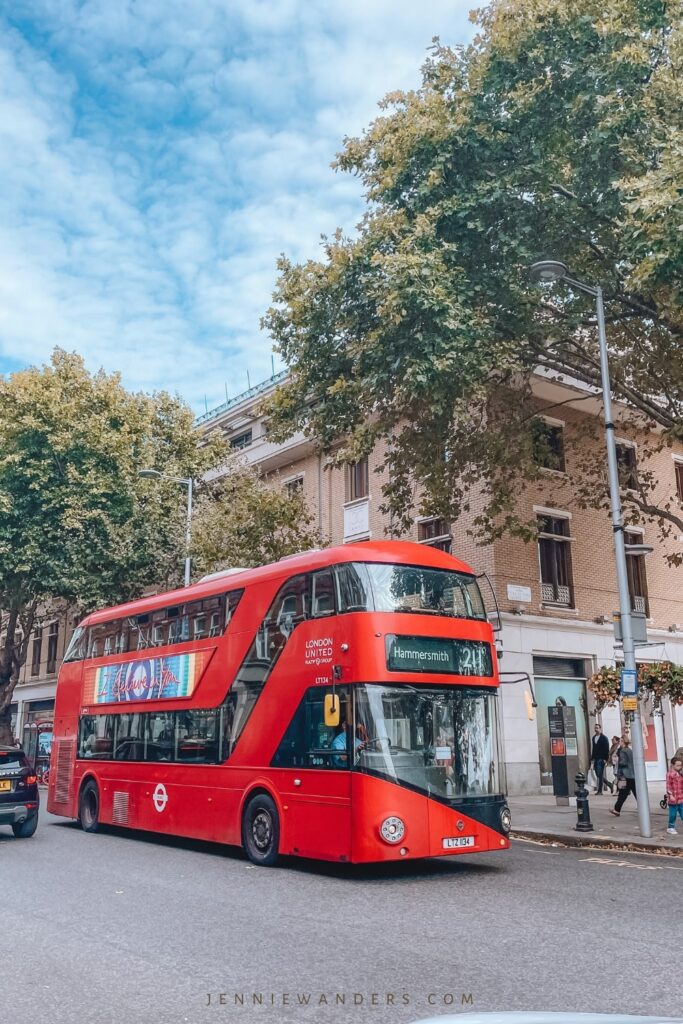
Best countries in Europe to visit on a budget
Want to know the cheapest countries to visit in Europe? Let’s take a look.
The cheapest country to travel to in Europe is Bulgaria, but other cheap countries in Europe include Hungary, Poland, Romania, Slovakia, and Slovenia. As I previously mentioned, Eastern Europe is your best bet if you want to interrail Europe on a budget.
When is the best time to Interrail on a budget?
Ultimately, interrailing Europe at any time of year is going to be expensive. But if you’re sensible and travel during off-peak times, you may be able to save some money.
☀️Avoid peak summer time (June – August) in Europe, because this is when European schools break up, and locals will want to take their summer holidays. Big tourist attractions like the Eiffel Tower or Oxford Street are 10 times busier, so you can expect to share your interrailing trip with hundreds of other people.
🍁 Travelling during spring or autumn (March-May/September – November) are a great time to backpack and interrail Europe. They’re quieter and children in Europe are in school.
❄️ Winter can be pricier in Europe, as most places will get snow. London at Christmas is one of the most magical times of year, but wow, it’s expensive!
Accommodation whilst interrailing Europe
If you’ve read any of my other interrail budget travel tips, or know anything about me, you’ll know I love using hostels to save money. Hostels are my go-to when travelling as they are just so much cheaper. A shared dorm can be up to 70% cheaper than an Airbnb or hotel!
But, if you can brave camping, I’d highly recommend looking at campsites. This will be even cheaper than a shared hostel room, and can be as low as 6 EUR a night in some European countries.
Private rooms, Airbnbs and hotels are expensive in Europe. Plan and work out your route to see if you can afford to stay in them beforehand.
💻 TOP TIP: I use Google Sheets for all of my budget planning needs, as it helps to lay it all out and see your money goals beforehand. If you can, take overnight trains to not pay for a night’s accommodation!
Best hostels to stay in Europe
Whilst I can’t list every single hostel in Europe, these are some of the best, well-known hostels to stay in whilst interrailing. Simply click the link to check prices and availability!
- 🇫🇷 Paris: Generator Paris or The People
- 🇭🇺 Budapest: Maverick City Lodge
- 🇳🇱 Amsterdam: Ecomama
- 🇩🇪 Berlin: The Circus Hostel
- 🇵🇹 Lisbon: Home Lisbon
- 🇦🇹 Vienna: Hostel Ruthensteiner
- 🇪🇸 Madrid: Sungate One
- 🇮🇪 Dublin: Gardiner House

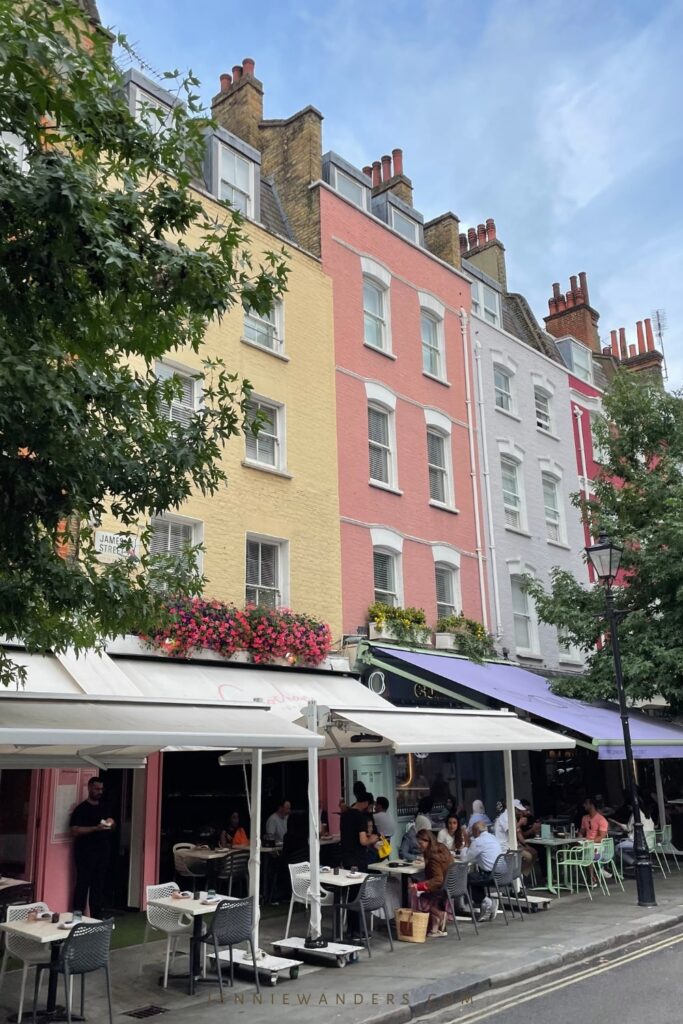
Need to book train tickets to travel around Europe? If you’re NOT buying an interrailing pass, I recommend this company for the cheapest tickets. ➡ You can check out their availability and timetables here.
Top tips for interrailing Europe on a budget
1) Plan, plan, plan!
One of the best ways to save money whilst interrailing is to plan. You ideally need to plan:
- Your route
- Accommodation
- Activities you really don’t want to miss
- Everything you’re going to pack
Now, I know this sounds over the top. Do I really need to plan everything? It may go against your spontaneity. But, planning is undoubtedly one of the best ways to save money whilst backpacking Europe.
Let’s break this down a bit further and see how planning can help you to save money whilst interrailing Europe.
Not sure which backpack to buy for interrailing Europe? Read my post to find the best backpack for you!
2) Plan your route
Planning your route helps you to save money because you then know exactly what countries you’re going to visit, and what seat reservations you need to make.
Whilst interrailing, there aren’t many trains you can just hop on without a seat reservation. And this all adds up! The quicker you get your seats booked, the more money you can save from advanced tickets.
Planning your route also means you can pre-book accommodation. Hostels and hotels are always cheaper in advance. Plus, you need to choose a starting destination! If you’re flying to that destination, you want to book flights way in advance to get the best prices.
Need to book train tickets to travel around Europe? If you’re NOT buying an interrailing pass, I recommend this company for the cheapest tickets. ➡ You can check out their availability and timetables here.

3) Pre-book your accommodation
As previously mentioned, planning your trip means you can pre-book your hostels and hotels. Generally, this means cheaper prices. It’s even better if you’re flexible on dates and can change your accommodation to get the best prices in a hostel.
Do your research before even leaving the country. Which hostel is the cheapest? Can you get it the cheapest on Hostelworld? Are there any campsites nearby to save extra money? Think about what you’re prepared to do to be able to travel Europe on a budget.
🦉 TOP TIP: Always, always book your hostels through Hostelworld. Not only do they have the best prices, but they have flexible cancellation policies, and a group chat to talk to other backpackers before your trip!
4) Plan and pre-book your activities
How does planning your activities help you to interrail on a budget? Well, if you plan your activities in advance, you can find the best deals and prices beforehand. You can also ensure you have enough money to make sure they actually happen.
Shop around, look online, and read travel blogs to see if you can get the tours in person on the day cheaper. See? Sometimes planning is a huge money-saving tool!
If you want to pre-book tours online, I highly recommend using this website. They often run discounts and deals on tours booked in advance.
🗺️ My interrailing must-have: Solo travelling but still want to take photos? 📸 I’ve found the most perfect adjustable tripod that’s lightweight and easy to set up (you don’t want any awkward moments alone, I know how it feels!)


5) Pack your bag in advance
One key part of saving money whilst you’re interrailing is to make sure you pack everything you need. Suncream, water filter bottles, hiking shoes, portable chargers – pack them BEFORE you leave the country. These are all things you’re more than likely going to want and don’t want to spend money on whilst you’re backpacking.
Suncream can cost upwards of 30 EUR in some European countries! Be prepared, pack well and you’ll save money whilst interrailing Europe.
Not sure what to pack interrailing? Check out my post: What To Pack Interrailing Europe: Packing List Essentials.
🗺️ My interrailing must-have: Well, it’s a little more advanced, but if you want to take high-quality photos, make sure you invest in a good camera. This doesn’t have to be thousands of pounds, and our favourite is the Canon EOS 6D Mark II.
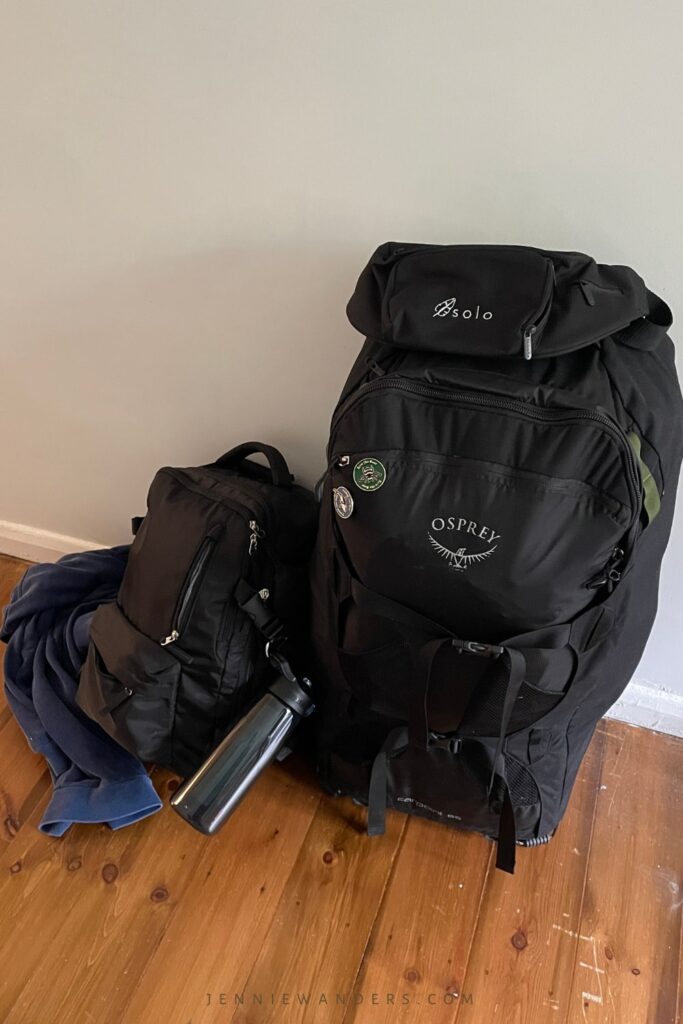
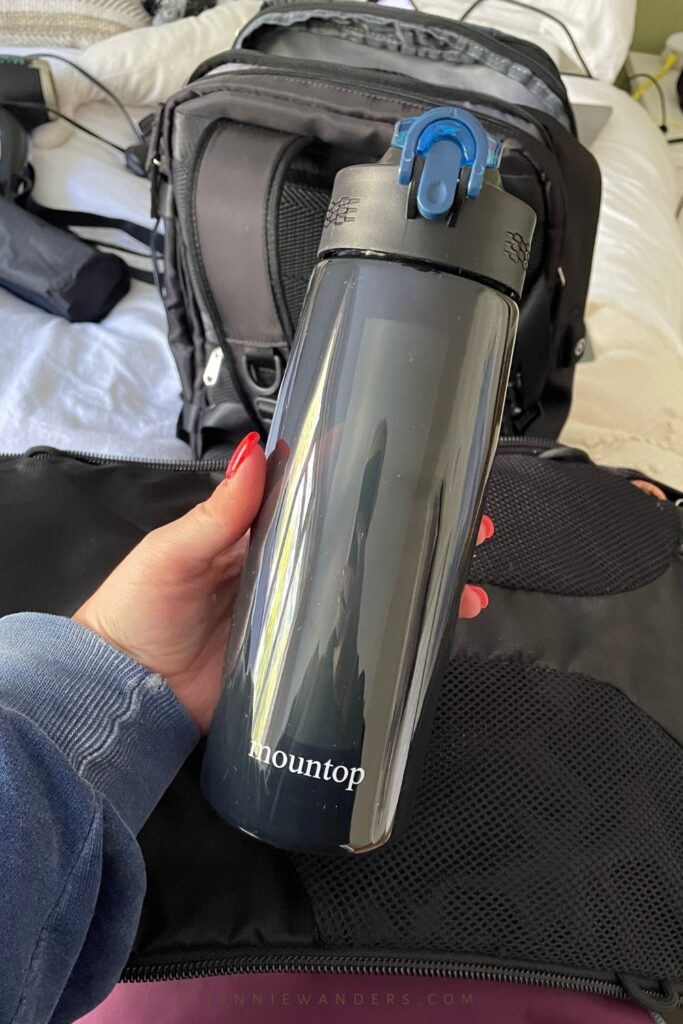
6) Buy your interrailing pass in advance
As I mentioned briefly earlier, you can actually get discounts when booking your interrailing pass online. If you have your interrail pass ready to go, you can then begin planning and working on your interrail budget needs.
Plus, if you’re under 27, you can buy a youth pass and save up to 25% on your interrailing pass. Things like this are good to know so you can work out where you can put the rest of your money during your trip. You can book and confirm your interrailing pass here!
Need to book train tickets to travel around Europe? If you’re NOT buying an interrailing pass, I recommend this company for the cheapest tickets. ➡ You can check out their availability and timetables here.
7) Use public bikes and walk to get around destinations in Europe
This one goes without saying, but make sure you avoid taxis when interrailing Europe. Hire a bike or walk around cities or locations to keep in your interrail budget. Bikes can be hired in Europe for under 5 EUR a day. Take advantage of this!
Alternatively, get to know the city’s metro systems. Most (and I emphasise, most) metro systems will be cheap for a day ticket, and that means you can get around the city as much as you’d like.
However, in visiting cities like London, metro systems aren’t so cheap. So just be wary and check beforehand. Uber is also available in most European countries, which is a good way to keep travelling costs down.
If you’re looking to hire a car in Europe, we rent our cars from this company. They’re reliable, cheap and have car rentals all over the world! ➡ You can check out the prices for car hire in Europe now!
8) Opt for slower, regional trains
I know, *cry*. You might have heard about the high-speed trains in Europe, but they may max out your poor interrail budget.
You have to pay a 5 – 20 EUR seat reservation cost if you want to use these kinds of trains. Even though the regional trains may be slower and more rickety, they’re a great way to save money on your interrailing trip if you’re not in a rush.
You can learn more about train reservations, train tickets, a different country pass and the various train journeys here.

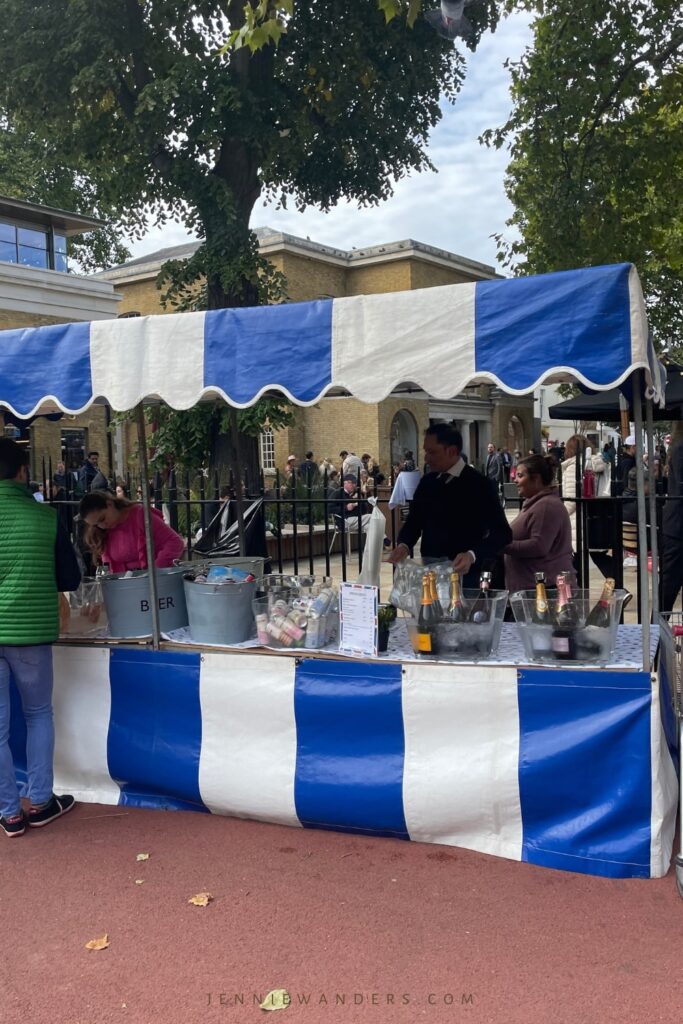
9) Stay in accommodation OUT of the city centres
Staying just out of a major city is cheaper than staying in the centre of one. If you can work out a city’s metro system, and know how to get into the city safely, you’re better off staying out of the main areas (or in a budget hostel).
This will save you a lot of money whilst interrailing Europe! Plus, it’s always a bit of an adventure staying somewhere less well-known, right?!
10) Pay more for a hostel with a kitchen
Ok, hear me out on this one. It may seem strange that I’m telling you to pay MORE, but there’s a reason for this. If you actually like the place you’re staying in, and it has a kitchen, you are more likely to stay in and cook. Ultimately, this will save you more money than anything else.
Meals in a restaurant in Europe can cost upwards of 50 EUR per person (!), just for a main course and a drink. Stay somewhere with a kitchen, and that’s a saving of 50 EUR per night!
11) Carry a water filter bottle
Carrying your own water bottle is one of my best interrailing budget tips. Water in Europe is expensive (shock!) and can cost up to 5 EUR a bottle in some countries! With a water filter bottle, you can drink water from any tap, and save countless pennies on buying bottled water.
Plus, it’s also a great sustainable way to travel and save the planet! You can buy your own water filter bottle here (this one is my favourite).
12) Cook your own meals and have picnics to enjoy the view!
This isn’t a backpacking budget secret and is something most travellers on a budget do regularly. Avoid eating out and cook your own meals. This could save you hundreds of pounds.
Don’t want to be stuck in your hostel kitchel? Have a picnic! You can pick up a baguette and some cheese from a local supermarket and have a picnic for under 10 EUR! It’s also a great experience and something you won’t forget whilst interrailing Europe.
13) Show your interrailing pass for activities
Your interrailing pass has so many added benefits, including discounts on hostels, hotels, ferries, activities, and tour guides. Discounts differ from country to country. Show your interrailing pass wherever you go and save money every day!
➡ BUY YOUR INTERRAILING PASS NOW!
14) Take free walking tours
This is one of my favourite ways to save money when interrailing Europe! All across Europe (and the world), there are free walking tours that take place on a daily basis. If you’re staying in a hostel, they may even be organised for you. Free walking tours are also a great way to make new interrailing friends!
Take advantage of free tours, cheap public transport, and free activities like museums all over Europe.
15) Use free Wifi or download an eSIM
Depending on how many countries you’re travelling to, it might be worth getting a local SIM card when you enter a new country. This means you won’t spend any money on unwanted roaming charges and you know exactly what you’re spending on your phone. Ensure data roaming is switched OFF as soon as you land (it will start charging you immediately).
If you’d prefer to use eSIMs (like myself), I recommend pre-buying with this company. They have easy, downloadable eSIMs for countries all over the world. You can check prices and availability here.
Most European cities also have free wifi. Take advantage of this wherever you go!

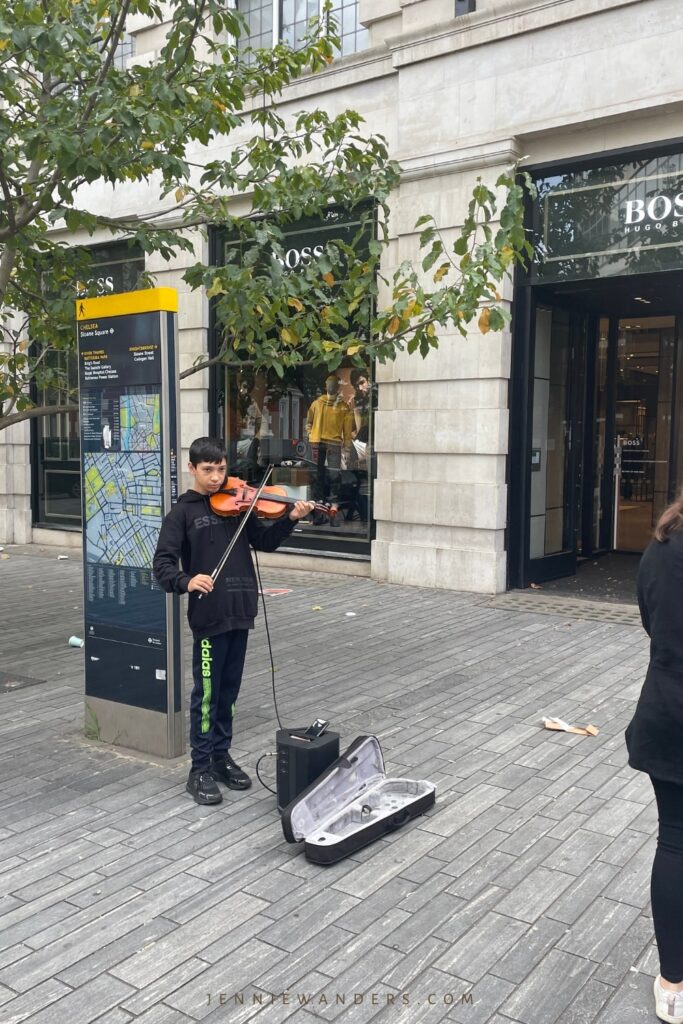
Interrailing on a budget FAQS
1) Is the interrailing pass worth it?
Buying an interrailing pass was one of the best decisions I’ve ever made. Not only did it save me money (I’m a regular backpacker, so I’m always looking for ways to save), but it also meant that I could travel around Europe without having to worry about missings trains or buses.
Because my Interrail pass was valid for a month, I had plenty of time to explore each country I visited. If you’re thinking of interrailing around Europe, then I would definitely recommend it – just make sure you buy your Interrail pass in advance so you can get the best deals!
Your interrailing pass allows you to travel on night trains, visit multiple European cities, save on train fares, get discounts on public transport, and have a perfect trip! Plus, it’s totally suitable for solo travellers.
➡ BUY YOUR INTERRAILING PASS NOW!
Check out my more in-depth post about the interrailing pass here: Is the Interrail Pass Worth it? An Honest Review.
2) Will I need a visa to travel to the EU after Brexit?
So you’re planning a trip to Europe after Brexit? Well, the good news is that you won’t need a visa to travel to most European countries (if you’re from the UK). If you visit as a tourist and are only staying for up to 90 days within 180 days, you do not need a visa. However, there are a few things you’ll need to keep in mind.
For starters, your passport should be valid for at least six months after your planned return date. You’ll also need to have proof of travel insurance and enough money to support yourself during your stay.
But, things change ALL the time, so make sure you do your research before you go.
3) What is the difference between Interrail and Eurail?
There is little difference between Interrail and Eurail, apart from who can use each one. Only European citizens can use an interrailing pass, and if you are from outside Europe, you will need a Eurail pass.
🚝 Need to buy your interrailing pass? I recommend checking this website for the best discounts and deals!
4) Do I need a SIM card to interrail Europe?
Yes, it’s worth downloading an eSIM on your phone to ensure you can use it for directions and avoid roaming charges as soon as you arrive.
ESIMs are easy to download and ready to use within a few minutes of purchasing! Plus, there are eSIMs available for the entire continent of Europe, so there’s no longer a need to hunt down free Wifi! ➡ You can check out the prices and packages for eSIMs here!
5) What tours should I do whilst interrailing Europe?
Looking to book a tour whilst interrailing Europe? Tours are one of the best ways to see the hidden gems of the country you are visiting. If you’re travelling during peak season, I highly recommend pre-booking your tours to ensure you don’t miss out!
When travelling, we use this company to book our tours. Tours include skip-the-line tickets to the world’s most iconic attractions, walking tours by top local experts, immersive food and beverage tours, cooking and craft classes, bucket list experiences, and niche offerings you won’t find anywhere else!
➡ You can check out available tours in Europe with prices here!
6) Do I need a car to interrail Europe?
The whole point of interrailing is to travel Europe by train, so it’s unlikely you will need to hire a car. However, if you head to the Italian countryside, or want to take a day trip, you may want to hire a car; especially if a group of you have got together in a hostel and want to travel together.
If you’re looking to hire a car in Europe, we rent our cars from this company. They’re reliable, cheap and have car rentals all over the world! ➡ You can check out the prices for car hire in Europe now!
How to Interrail on a Budget: In a Nutshell
As you can see, there are a few ways to interrail on a budget. It can be done! You just have to be wise about it and make sure you plan ahead of time. Interrailing Europe isn’t cheap, but it can be done as a budget backpacker if you’re smart about it.
Got a question about how to interrail on a budget? Let me know on Instagram or in the comments below!
Happy travelling!
Jennie 😀 x
Like this post? Pin it!
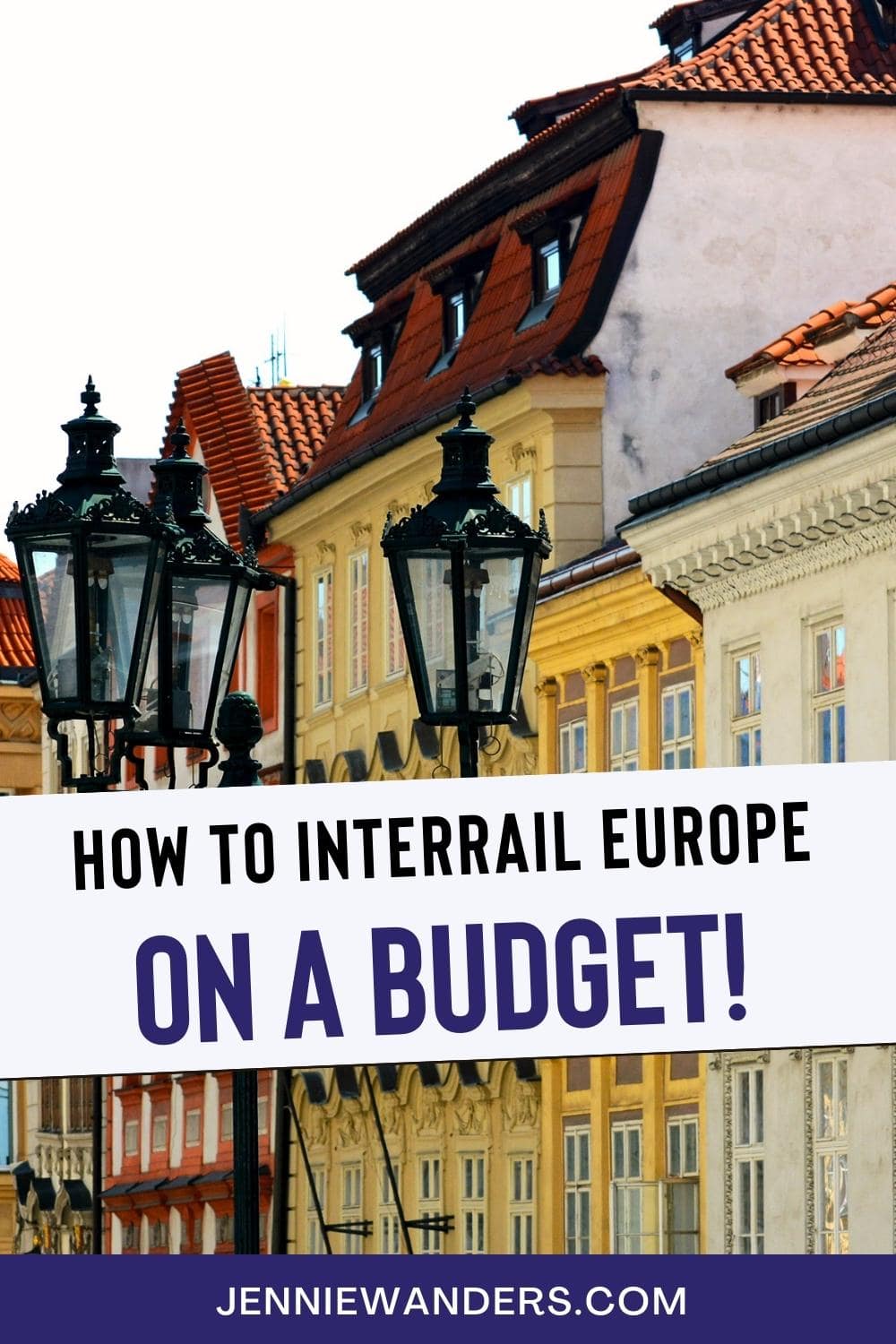
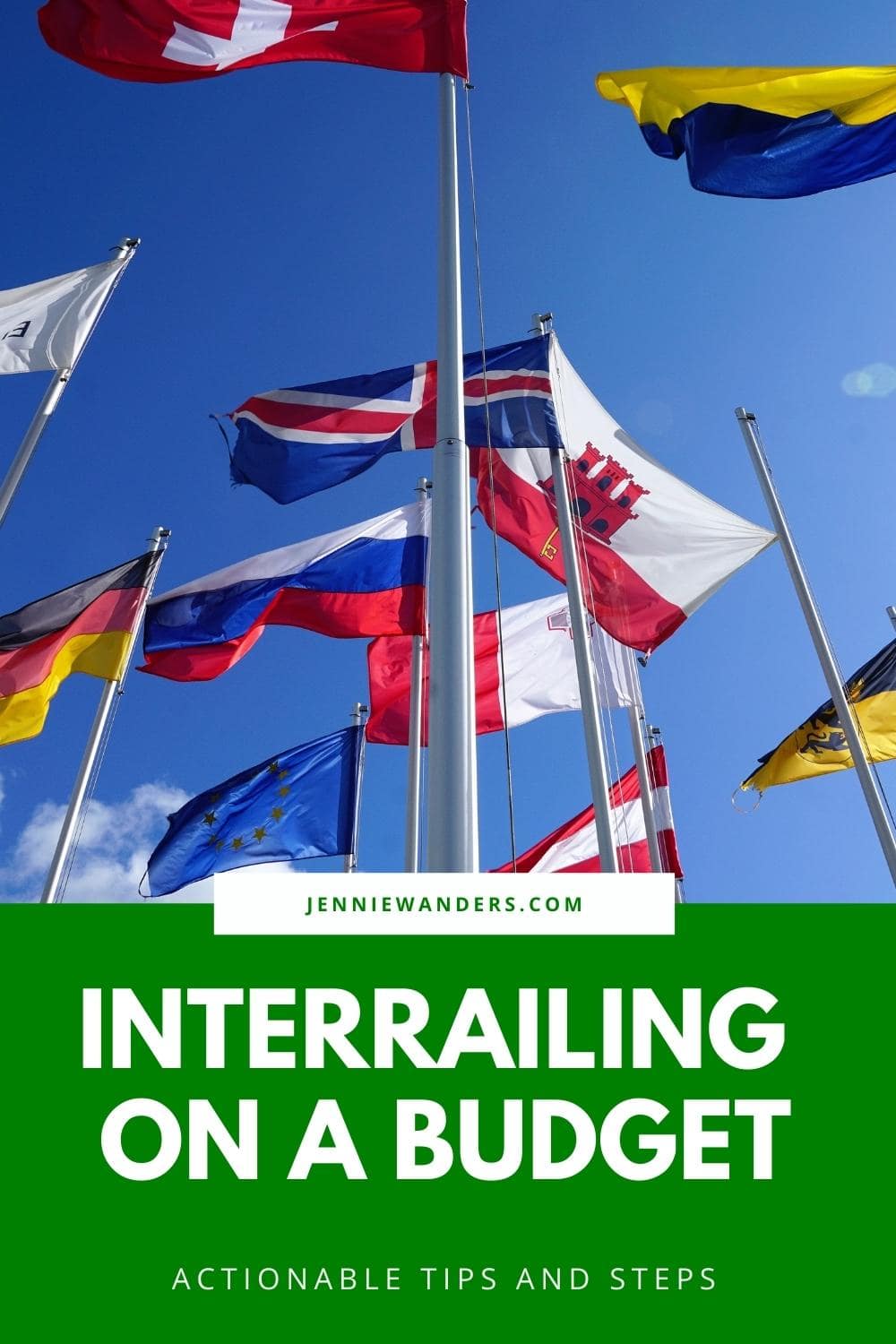
MEET THE AUTHOR!

Hi! I'm Jennie! As a part-time travel blogger based in London, I'm using my 10+ years of travel expertise to encourage & inspire you to step out of your comfort zone through sustainable, mindful and purposeful travel.
If I'm not writing, I'm either reading, drinking coffee or taking a wild swim (all at the same time if I'm feeling impressive).


